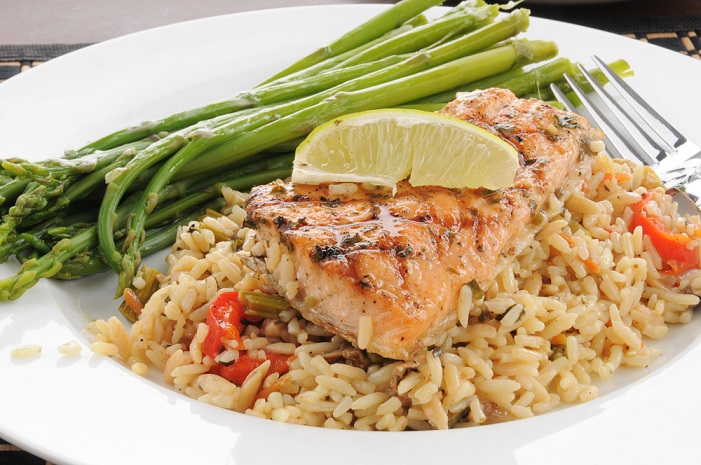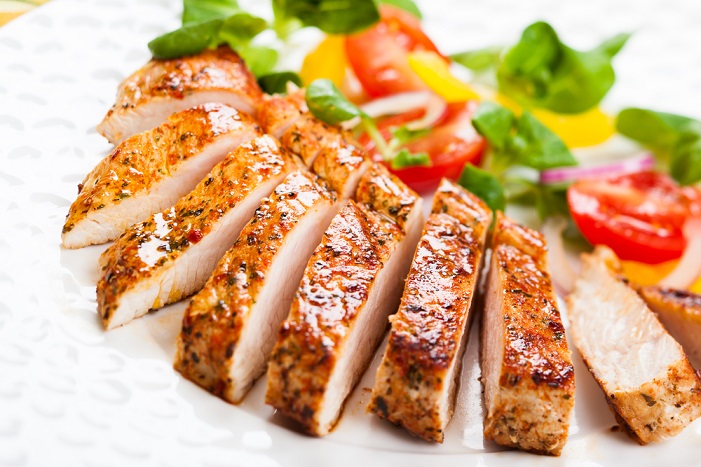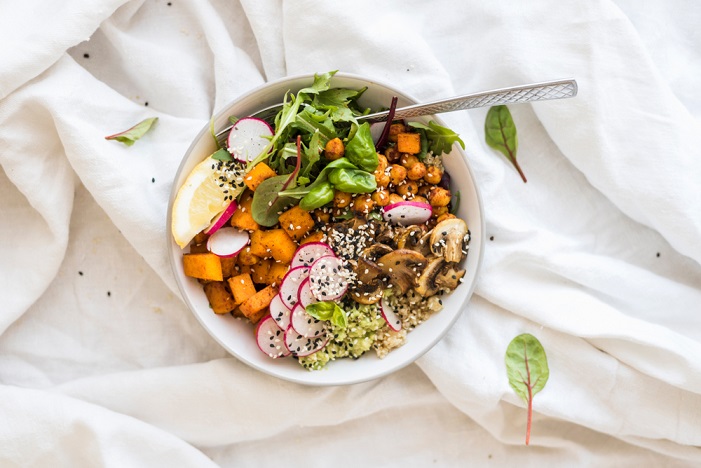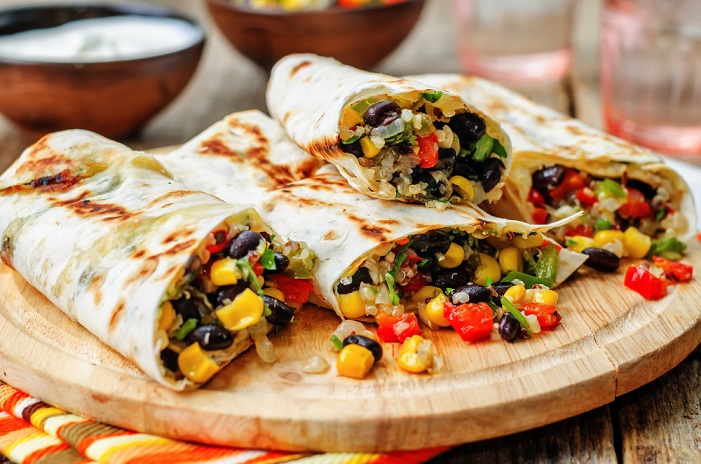SUMMARY
With a flexitarian diet, you can take a flexible approach to eating. This diet emphasizes plant-based foods but allows some meat on occasion.
Fresh N’ Lean is the nation’s largest organic meal delivery service. Our tasty, chef-prepared cuisine is always fresh and never frozen, and we offer five convenient meal plans: Protein+, Keto, Paleo, Standard Vegan and Low-Carb Vegan. Choose Fresh N’ Lean for affordable nutrition, delivered to your doorstep.
A lot of people treat diet choices as all-or-nothing.
Do you eat refined sugar or cut it out completely? Are you low-carb or carb-loading? Are you a vegan or a meat-eater?
But, often, there are middle-grounds between these extremes that can work really well for some people. The best example is the “flexitarian” diet, which is like a “semi-vegetarian” diet that embraces the middle-ground and eschews the all-or-nothing attitude.
But is it really worth switching to a flexitarian diet? Does it accomplish much for the environment? Will it make you healthier or help you lose weight?
If you’re worrying that the only way to improve your diet’s impact on your body or the environment is to make a more drastic change to what you eat, these seven benefits of a flexitarian diet should set your mind at ease.
What is the Flexitarian Diet?
Before getting into the specific benefits of a flexitarian diet, it’s important to be clear on what it actually is.
The flexitarian diet was devised by a dietitian called Dawn Jackson Blatner, and the name is a combination of the words “flexible vegetarian.” This tells you the key fact about the diet: it’s similar to being a vegetarian but much less strict. You limit your consumption of meat but not entirely.
There are really no hard rules to follow or anything like that; it’s a more general approach that keeps some key principles in mind.
- Mainly eat fruits, vegetables, whole grains and legumes.
- Get most of your protein from plants rather than animals.
- Eat meat from time to time.
- Stick to the most natural form of foods, avoiding overly processed foods.
- Try to keep any added sugar to a minimum.
This is really the core of the diet, but what it boils down to is that you’re essentially a vegetarian but you eat meat when it takes your fancy. In theory, this should offer many of the benefits of a vegetarian diet while being much easier to stick to in the long-term.
The Benefits of a Flexitarian Diet

Since flexitarian diets are relatively new, there isn’t too much evidence addressing it specifically, but it is expected to offer many of the same benefits as a vegetarian diet. A review published in early 2017 looked at the evidence on flexitarian diets specifically and results from this will be referenced where relevant.
1 – Reduced Risk of Type 2 Diabetes
Research has found that vegetarian diets are better for reducing the risk of type 2 diabetes than “diabetes-friendly” diets. This is expected to carry over to flexitarian diets to some extent, and indeed the review article mentioned above confirmed that there is a reduction in the risk for type 2 diabetes for flexitarians.
Since the classification of “flexitarian” is relatively new, there hasn’t been too much research on it specifically, but the results so far are strongly suggestive of a benefit.
2 – Better for the Environment
Livestock is a huge source of greenhouse gas emissions, and going vegetarian or vegan is one of the best things you can do to reduce your carbon footprint. While this would undoubtedly be better, switching to a flexitarian diet still provides some of the same benefits to the environment, depending on how much you reduce your meat consumption.
When you do eat meat, avoiding beef and lamb is a particularly good idea because farming these animals contributes the most to greenhouse gas emissions.
3 – More Affordable
Although there is a lot of variation in how much people spend on food shopping, flexitarian diets don’t rely on special, hard-to-find ingredients or anything more expensive than what you’ll ordinarily buy. If you currently eat meat, it’s likely that you’ll actually save a bit of money by switching to a flexitarian diet, because you’ll be replacing the most expensive part of most meals with something more affordable.
Research has backed this assumption up, too, with vegetarians saving up to $750 per year on food. Of course, as a flexitarian, your savings won’t be quite this big but you will still save money.
4 – Benefits for Weight Loss
Losing weight can be very challenging to achieve, and this difficulty has spawned a whole industry of fad diets and “one simple trick” type claims to help you get the body you want.
A flexitarian diet is the ideal solution in a lot of ways, though. The basic reason for this is that plant-based foods tend to be lower in calories, so incorporating more into your diet helps you feel full but still keeps your calorie-count low.
Studies have confirmed this too, although the focus is ordinarily on vegetarians and vegans. For example, one review of existing research found that people who cut out meat lost 4.5 pounds/2 kg more than people who didn’t, over an 18 week period. Another review found that people with plant-based diets weigh about 15 percent less than meat-eaters on average.
The review article on flexitarian diets mentioned earlier also covers weight loss, and finds suggestive evidence of benefits for weight loss. As expected, vegetarian and vegan diets were associated with lower weights and more weight loss, but flexitarian diets were better than ordinary omnivorous diets.
5 – Potentially Reduces Risk of Heart Disease
As with many of the entries on this list, there isn’t much evidence on the benefits of a flexitarian diet for your heart, but there is a lot more research on vegetarian diets. The studies looking at vegetarians tend to find a reduced risk of heart disease.
For instance, one study followed 45,000 adults for 11 years, and found that vegetarians had almost a third lower risk of heart disease than non-vegetarians. Other studies have shown that vegetarians have lower blood pressure than meat-eaters, too. Again, the results addressing vegetarians don’t completely carry over to flexitarians, but the same benefits would be expected to a lesser degree.
One study presented at a conference addressed flexitarian diets specifically, finding that people whose diet was at least 70 percent plant-based reduced their risk of dying from heart disease by 20 percent, compared to people who ate less plant-based foods. This would need to be published properly before scientists can really evaluate the findings, though.
The review article on flexitarian diets does mention improvements in blood pressure for people following a flexitarian diet, but this is based on one study and doesn’t necessarily mean that heart disease risk will be lower too.
6 – It’s Nutrient Dense
One of the biggest benefits of a flexitarian diet is that you’ll consume more nutrient-dense foods if you follow one. Nutrient-dense foods are ones that pack in a lot of nutrients for a relatively small amount of calories. In short, these are foods that give you a lot of what your body needs but don’t contribute much at all to weight gain.
Research has confirmed that vegetarian diets contain more nutrient-dense food than non-vegetarian diets. Again, this isn’t specifically addressing flexitarian diets, but it stands to reason that incorporating more plant-based food into your diet will lead to you consuming more nutrient-dense food too.
Of course, the more plant-based food you incorporate; the more nutrient-dense food you’ll consume too. There are specific foods you can choose if you want the most nutrient-dense options possible.
7 – It’s Easier to Follow than Vegetarian or Vegan Diets
The best thing about flexitarian diets, and really their defining characteristic, is that it’s a lot easier to stick to a flexitarian diet than a vegetarian or vegan one. The beauty of the flexitarian diet is that you can make it work for you rather than sticking to a bunch of hard-and-fast rules.
You might be happy eating plant-based meals at home, for instance, but really miss meat when you’re out at a restaurant. The benefit of being a flexitarian is that you can eat meat in those situations without “breaking” your diet. If your meat-eating friend is visiting, you can cook him or her something with meat and enjoy it together.
There are so many situations when the flexibility takes the sting out of being strictly vegetarian or vegan.
Making A Flexitarian Diet Work for You
First Steps
If you’re interested in switching to a flexitarian diet, the most important thing to remember is that there are no rules that are set in stone. However, there are some general tips that can be helpful in getting you into a healthy flexitarian diet.
- Cut down your meat portion sizes. Although you’ll be eating less meat anyway, one good tip is to reduce the size of your meat portions for meals where you do have it. Try to make 25 percent of your plate meat or poultry, 25 percent whole grains and the remaining half as fruits and vegetables.
- Replace meat in your favorite recipes. Many dishes you usually cook with meat can be easily turned into a vegetarian alternative by swapping out the meat for beans, lentils, chickpeas or a meat alternative.
- Learn new vegetarian recipes. Trying out new recipes helps you keep your diet feeling fresh and exciting, and makes it less likely you’ll miss having meat in every meal. If you enjoy cooking, the experimentation is enjoyable in its own right, but even if you don’t, you’ll be happy with the results.
Flexitarian Diet: Foods to Avoid
Loading up your plate with plant-based proteins, vegetables, whole grains and healthy fats is what makes the flexitarian diet work, but the easiest thing to get to grips with is the sort of things you should really avoid, or at least only have very rarely. These include:
- Processed meat: Sausages, bacon, salami, ham, hot dogs
- Fast food: Burgers, fries, milkshakes, fried chicken, pizza
- Refined carbs: White bread, white rice, pasta, pastries, instant oatmeal
- Added sugar: Candy, donuts, cookies, soda, cakes
Animal Products You Should Eat

When you do eat animal products, prioritizing certain options helps you get the best results from your flexitarian diet. Of course, you can eat whatever you like (and this is one of the beautiful things about the diet) but if you want to get the most out of the diet and do as much as you can to protect the environment, it’s best to prioritize:
- Poultry
- Eggs
- Fish (wild caught)
- Dairy
From free range, pasture-raised or grass fed animals where possible. When you eat meat, choosing grass fed or pasture-raised animals is the best approach too, and pork is preferable to beef or lamb when it comes to environmental impact.
Conclusion
Flexitarian diets are easy-to-follow, nutritious, great for losing weight, better for the environment and better for you all-round. They may present a slight challenge if you’re busy and finding the time to cook fresh food every day isn’t easy, but there are many potential solutions, including meal delivery programs that cater to alternative diets. However you accomplish it, though, flexitarian diets are a great way to eat healthier, expand your culinary horizons and look after the planet.





